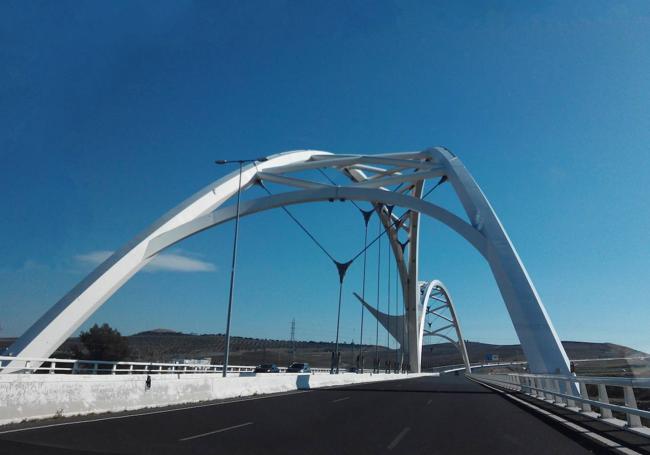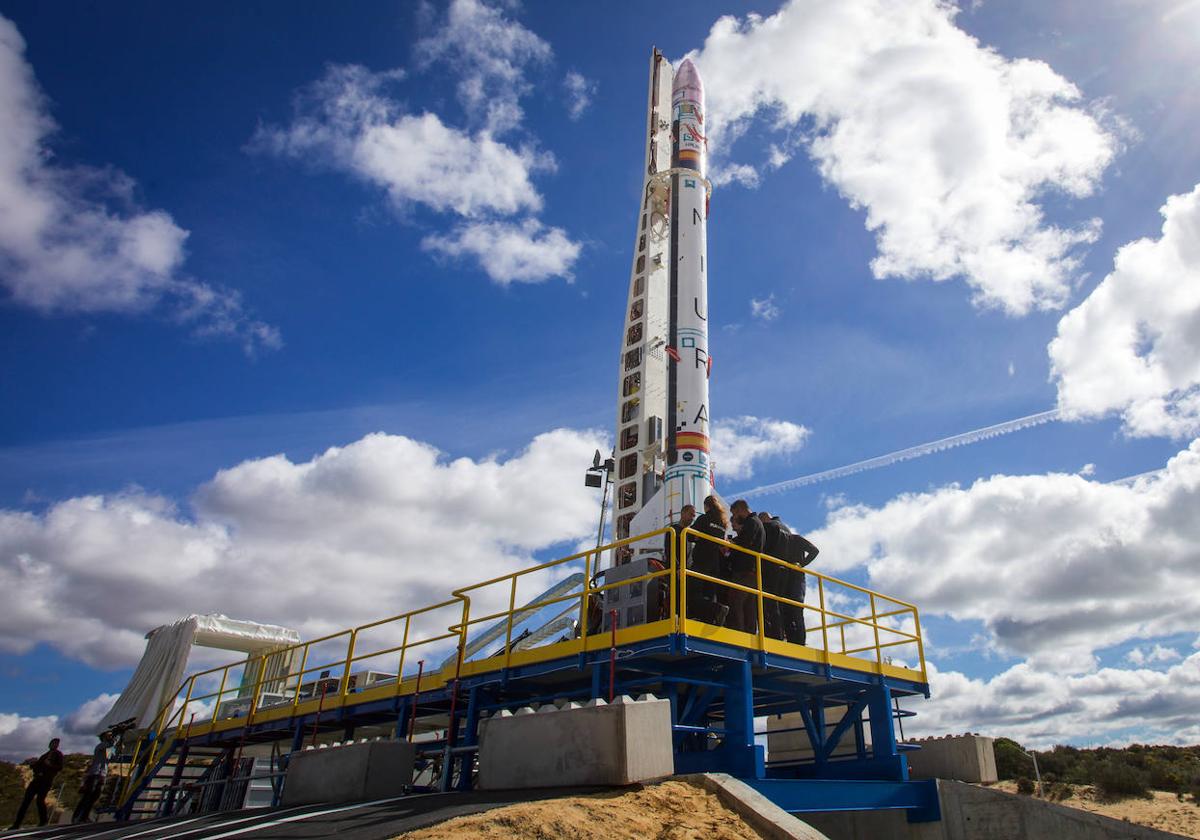Andalucía's historic role in space travel
If we trace ancient and modern history, it is evident that the south of Spain has definitely played a key role in exploration of the cosmos
Alekk M. Saanders
Friday, 12 April 2024, 16:52
Andalucía has been related to studies of the cosmos at least since the ninth century, when Ronda-born Abbas ibn Firnas conducted an experiment that has been labelled as a milestone in the history of human flight.
The Past: planetarium
Abbas ibn Firnas is the most famous 'scientist' and polymath of early Islamic Spain. He was born in Ronda in 810, but lived his whole life in Cordoba.
There, Ibn Firnas made various discoveries in the fields of astronomy and engineering. For example, he designed a reduced model of the cosmos from a terrestrial perspective, known as an armillary sphere, the first astronomical instrument in Europe.
Ibn Firnas developed a chain of rings, with the help of which it was possible to model the movement of planets and stars in the universe. The armillary sphere with rings was given as a present to Caliph Muhammad I of Cordoba, then a Muslim ruler of Al-Andalus.
In addition, using his knowledge of astrology, Ibn Firnas is thought to have designed a water clock, the clepsydra, which could tell the time on both cloudy days and nights.
Ronda-born Abbas Ibn Firnas developed a chain of rings, with the help of which it was possible to model the movement of planets and stars in the universe
Finally, Abbas ibn Firnas founded the first planetarium in history. One of the rooms in his house was devoted to the cosmos. Constellations, stars and weather phenomena were represented there.
Mechanisms created clouds, lightning and thunder in the four walls of the room. Not surprisingly, Ibn Firnas's contribution to astronautics was honoured. In 1976, a lunar impact crater on the far side of the Moon (before known as Crater 213) was named after the Andalusian.

The Present: spaceport
Few know that the first American space missions had Spanish participation. One of the key roles was assigned to the Maspalomas station, located in the southern part of the island of Gran Canaria. This ground-based radio antenna station for spacecraft communications was originally established in the 1960s to support Nasa's nascent human spaceflight programme.
Spanish antennas helped communicate with astronauts during the Apollo missions, including receiving Armstrong's first message from the Moon. Apparently, such cooperation helped Spain become a 'space power' as long as 50 years ago. Intasat, the first Spanish satellite, was launched from California in 1974.
As for Andalucía, the region got its spaceport, or rather a launch pad for suborbital rockets, in 1966. El Arenosillo Test Centre (CEDEA) was established in the municipality of Moguer, in Huelva province.
The choice of site was justified. The area near the town of Mazagón best suited the technical and operational conditions required for the space project, 'offering' an average altitude of 42 metres above sea level and 300 days of sunshine per year (the optimum weather conditions). Consequently, a ministerial order granted permission to occupy a public forest with an initial area of 30.8 hectares in 'Coto Mazagón'.
Today, El Arenosillo hosts an autonomous astronomical observatory with two domes and three telescopes. The town of Mazagón is home to the INTA (Instituto Nacional de Tecnica Aeroespacial).
El Arenosillo Centre with its spacecraft launch pad was originally intended as an experimental centre for the development of aerospace activities. It was aimed to implement a joint project with Nasa to obtain high-altitude meteorological information in Spain, testing and evaluating equipment and observation techniques with meteorological sounding rockets.
The first rocket launch at El Arenosillo, located in Andalucía, took place on 15 October 1966. It was the British Skua rocket
The first rocket launch at El Arenosillo took place on 15 October 1966. It was the British Skua rocket, the first of a family of sounding rockets. It was reported that the first launch exceeded an altitude of 60km.
Until 1994, over 500 British-made Skua rockets were successfully launched from Andalucía. Another British rocket, Skylark, was launched from El Arenosillo on 12 January 1974. Since the 1990s, Spanish-made rockets have been launched into space from the Andalusian coast.
The Future: space tourism
In recent years, Andalucía has often been mentioned in the context of space tourism. In November 2020, the newspaper Diario de Sevilla published the headline 'The first tourist flights to the frontier of space will be made from Seville'.
It was about the ambitious project of the company EOS-X Space, which has chosen the Andalusian capital to establish its launch base and engineering and development work to set up the project.
According to a statement made by the company at the Tourism Innovation Summit (TIS) held in Seville, the project was to be a milestone for the Andalusian industry and aims to take 10,000 people to the frontier of space in a pressurised capsule within the next decade.
In recent years, Andalucía has often been mentioned in the context of space tourism
Last year, Spanish company Halo Space confirmed its intention to open the doors of space tourism to the general public. According to the event's organisers, passengers accommodated in a space capsule for nine people will be able to observe "grandeur of the curvature of the Earth" and enjoy "incredible views of space".
The Spanish company emphasises that, thanks to zero emissions, these journeys will take place in a sustainable and safe environment.
In the context of space tourism, Marbella is also featured. The Swiss hotel school Les Roches, located in the Costa del Sol resort, is the organiser of the Space & Underwater Tourism Universal Summit (SUTUS).
It is reported that Halo Space will be presenting more information on stratospheric tourism flights at the fifth summit, which will be held under the theme Tourism Beyond Natural Borders in September. So far, it is known that the journey will last between four and six hours and could become a reality as early as 2025.
